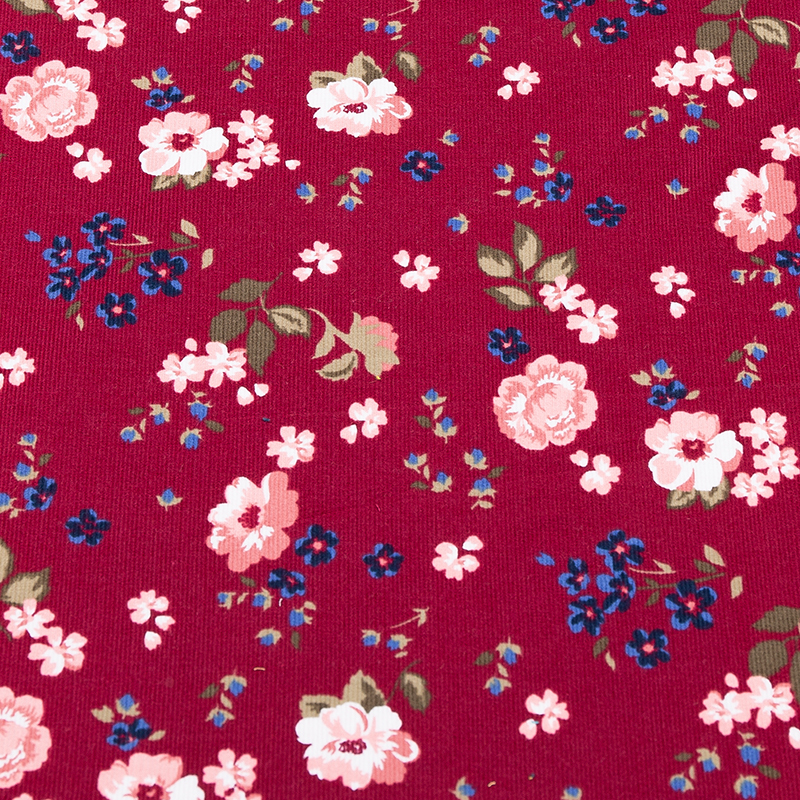When considering corduroy fabric for fashion items or upholstery, one of the key concerns often revolves around colorfastness—especially when the fabric is exposed to sunlight or subjected to frequent washing. Whether it's a stylish jacket, a cozy sofa cushion, or a pair of durable trousers, customers need to be assured that the color won’t fade or degrade over time. After all, a vibrant, rich color is a significant part of corduroy’s charm, and maintaining that look throughout the product’s lifespan is crucial.
Corduroy is inherently made with tightly woven fibers, which plays a role in its resistance to wear. However, when it comes to colorfastness, the story goes beyond the fabric's weave alone. The type of dyeing process used, whether it's a piece-dye or garment-dye method, can make a noticeable difference in how well the fabric retains its color. Corduroy fabrics dyed using more advanced techniques such as reactive dyeing tend to have superior color retention. Reactive dyes bond chemically with the fibers, ensuring that the color stays vibrant longer, even after repeated washing or exposure to UV light.
Of course, the fabric blend also influences its overall colorfastness. For example, pure cotton corduroy tends to absorb dye more readily than polyester-blended versions, but this can also lead to quicker fading when exposed to harsh conditions. Polyester blends, on the other hand, are more resistant to UV damage and retain their color longer, making them a preferred option for outdoor applications or items that experience heavy sun exposure. In upholstery settings, this means a corduroy fabric mixed with synthetic fibers might hold up better on a sofa that’s constantly exposed to sunlight or used in areas with fluctuating temperatures.

Frequent washing can be a major factor in the degradation of a fabric’s color. Corduroy is known for its durability, but it requires proper care to maintain its appearance. Fabrics that are pre-washed or pre-treated often exhibit better color retention after several wash cycles. Using gentle, cold water washes and air drying the fabric can help minimize color fading, especially for vibrant hues. For upholstery applications, ensuring that the fabric is treated with a color-protecting finish can enhance its resistance to fading and extend the life of its color, even in high-use areas like living rooms or offices.
One often-overlooked aspect of colorfastness is the corduroy fabric’s pile—corduroy’s distinctive raised texture. The pile can act like a shield, protecting the underlying fabric and its dye from the abrasive effects of friction or exposure to sunlight. This gives the fabric an added layer of protection against fading. Additionally, corduroy’s pile helps it resist dirt buildup, which can also contribute to its longevity. However, the key to long-lasting color is not just the fabric itself but also the type of finish applied after dyeing. Fabrics with anti-fading treatments or UV-resistant coatings will perform better in environments where exposure to light is inevitable.
When selecting corduroy for fashion or upholstery, it’s essential to weigh the type of dyeing process, fabric blend, and post-treatment finishes. Corduroy with superior colorfastness not only looks great at the time of purchase but will also retain its vibrant appearance long after it’s been worn or used. By choosing high-quality, well-treated corduroy, you’re ensuring that the rich, textured look of the fabric will stand the test of time. Whether you're outfitting a high-traffic area or creating a timeless wardrobe piece, corduroy’s color retention will play a major role in the satisfaction of your customers.



 English
English Español
Español Jan 17,2025
Jan 17,2025














 +86-519-86503571
+86-519-86503571
 Phone: +86-13218666905
Phone: +86-13218666905 Tel: +86-0519-86503571
Tel: +86-0519-86503571 Fax: +86-0519-86508551
Fax: +86-0519-86508551 E-mail:
E-mail: 